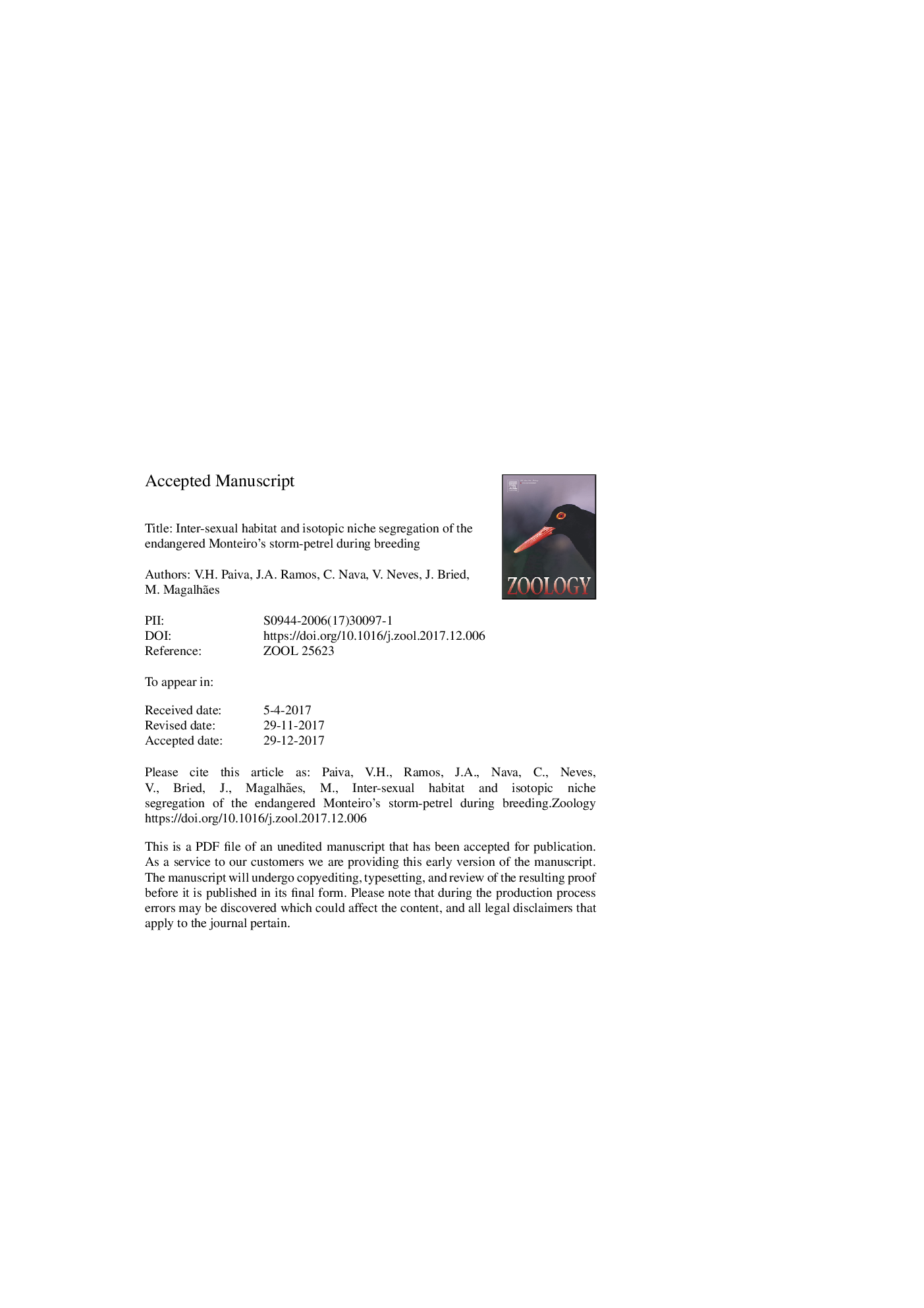| Article ID | Journal | Published Year | Pages | File Type |
|---|---|---|---|---|
| 8627052 | Zoology | 2018 | 27 Pages |
Abstract
At-sea distribution and trophic ecology of small seabird species (i.e. < 100 g) is far less known when compared to their larger relatives. We studied the habitat use (spatial ecology) and isotopic niches (trophic ecology) of the endangered Monteiro's storm-petrel Hydrobates monteiroi during the incubation and chick-rearing periods of 2013. There was a sexual foraging segregation of Monteiro's storm-petrels during the breeding period (tracking data) but also during the non-breeding stage (stable isotope analysis). Females took advantage of their longer wings to forage over the shallower Mid-Atlantic ridge (MAR) north of Azores, under colder and windier regimes when compared to males, who mostly exploited northern deep waters comparatively closer to the breeding colony. Between-sex differences in the spatial distribution were more obvious during the incubation period, with the overlap in their distribution increasing during the chick-rearing phase. There was also an isotopic segregation between sexes both during the previous breeding and the non-breeding stages, with females exhibiting a narrower, lower level isotopic niche when compared to males. Though the distribution patterns reported here should be useful for the at-sea conservation of this endangered species, future research should focus on (1) performing year-round tracking to map the species' distribution during the non-breeding period and (2) gathering multi-year tracking information to understand the effect of inter-annual environmental stochasticity on the foraging choices and trophic habits of the species.
Related Topics
Life Sciences
Agricultural and Biological Sciences
Animal Science and Zoology
Authors
V.H. Paiva, J.A. Ramos, C. Nava, V. Neves, J. Bried, M. Magalhães,
